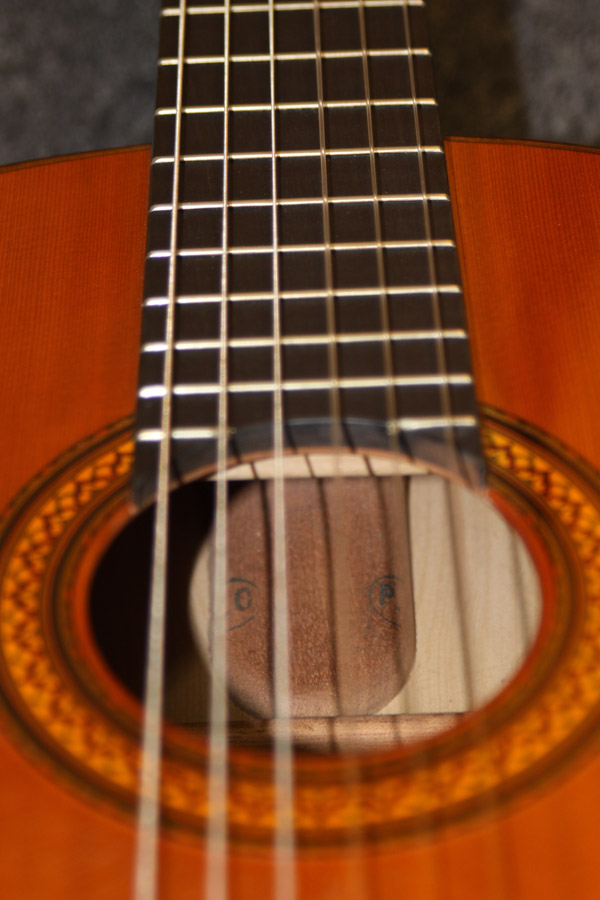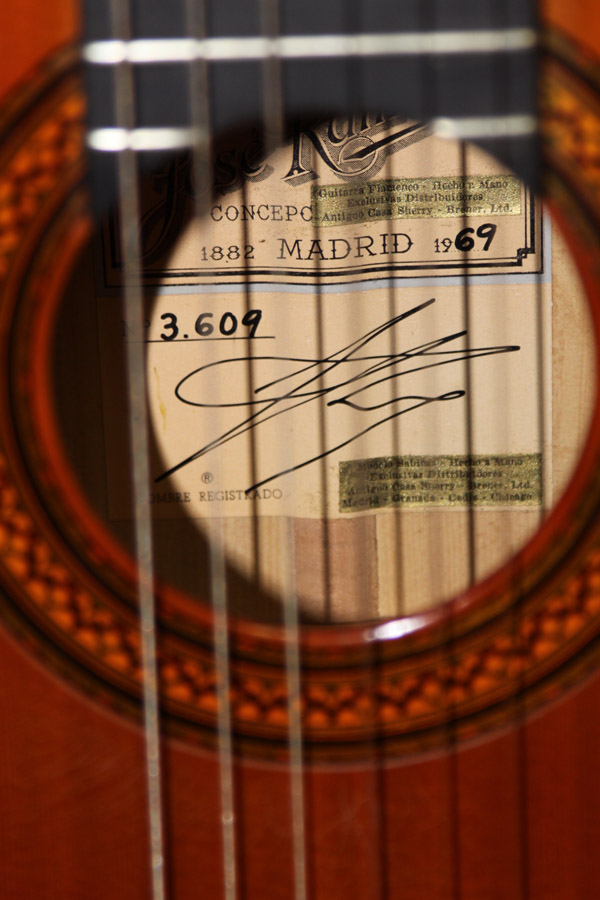|
C. Vega -> RE: So what is the mythology about Sherry Brenner? (Jul. 19 2012 21:03:49)
|
The younger Barbero never used the name "Marcelino". On his own instruments, including those with the Arcangel Fernandez shop labels, he used the name Marcelo Barbero, Hijo. "Marcelino Barbero" was just another fictitious Sherry name but it was close enough to the real thing to upset more than a few people.
You can also add "Francisco Ramirez" to the Sherry roster of phony luthier names.
Before the powers that be forced Sherry to divulge the actual country of origin of his guitars, his Hernandis and Garcia guitars were labeled "Antonio Hernandis" and "Federico Garcia" and they also said "Madrid" on the labels. The later big labels that listed the materials used and their supposed places of origin (most were lies like "Spanish pine" tops and rosettes from "Persia") did show the final point of assembly as Japan.
A friend of mine once called Sherry about one of his "Barbero" guitars and Sherry told him that it was made from Spanish components assembled in Japan.
Nice try, Jimbo.
Erik,
You seem to have your facts confused. Manuel Contreras learned the craft of guitar making from Jose Ramirez, not the other way around. Contreras worked for Ramirez from 1959 until 1962 when he opened his own shop. While working in the Ramirez shop Contreras, like all the other workers, built instruments to Ramirez designs and specifications. There was no place in the Ramirez plan for individual interpretation. The guitars were all built exactly the same way and, yes, some can be quite good and others less so. Ramirez had the reputation of being a stern taskmaster who insisted on things being done his way.
The guitars were (and still are) all built by a team of people and not built entirely from start to finish by individual luthiers as is commonly assumed. The initials or numbers stamped in earlier Ramirez guitars merely indicate which worker did the major assembly of that particular guitar. The assemblers worked with batches of semi-finished parts prepared in the shop by other workers and generally worked on four instruments at a time. They essentially were putting kits together. The other workers bent sides, joined and thicknessed tops and backs, glued up and shaped necks, made rosette tiles, did the fretting, finishing, etc. and final setup and adjustments.
The final result was due more to the luck of the draw rather than which worker glued the guitar together. Some dealers and private sellers of older Ramirez guitars would have you believe that the initials of a particular worker stamped in a Ramirez guitar automatically make it a better instrument and thus more valuable and desirable. This is complete and total nonsense.
Ramirez never worked for Contreras and there's no such thing as a Contreras guitar built by Jose Ramirez....classical, flamenco or otherwise.
I like the older Ramirez guitars. I have a 1963 spruce/cypress/pegs blanca with the "I.M." stamp of Ignacio Manzano Rozas on the foot.
I also have a signed 1973 Manuel Contreras blanca with pegs. They are both very fine but very different instruments.
|
|
|
|


